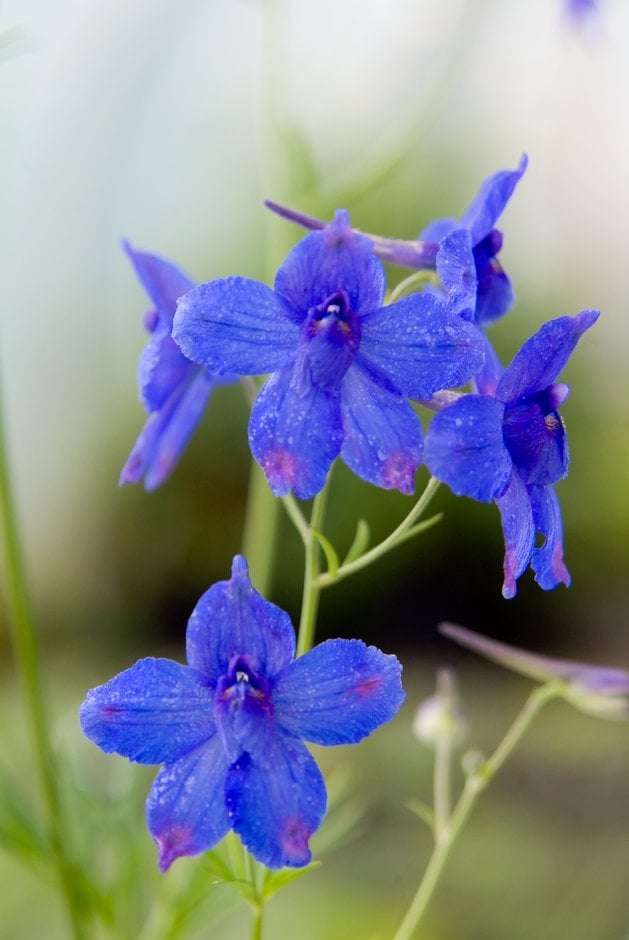Delphinium grandiflorum
large-flowered delphinium
A short-lived perennial, usually grown as an annual, with foliage divided into narrow lobes. Single, spurred flowers in blue, purple or white are produced in open sprays in early summer
Synonyms
Delphinium chinenseDelphinium grandiflorum var. chinense

Buy this plant
Size
Ultimate height
0.1–0.5 metresTime to ultimate height
1 yearUltimate spread
0.1–0.5 metresGrowing conditions
Moisture
Moist but well–drainedpH
Acid, Alkaline, NeutralColour & scent
| Stem | Flower | Foliage | Fruit | |
| Spring | Green | |||
|---|---|---|---|---|
| Summer | Blue Purple White | Green | ||
| Autumn | ||||
| Winter |
Position
- Full sun
Aspect
South–facing or West–facing or East–facing
Exposure
Sheltered Hardiness
H7Botanical details
- Family
- Ranunculaceae
- Native to GB / Ireland
- No
- Foliage
- Deciduous
- Habit
- Bushy
- Potentially harmful
- Humans/Pets: Harmful if eaten. Wear gloves and other protective equipment when handling. For further information and contact numbers regarding pets, see the HTA guide to potentially harmful plants
- Genus
Delphinium can be annuals, biennials or perennials, with palmately lobed basal leaves and showy bowl-shaped flowers in spikes, racemes or panicles
- Name status
Correct
- Plant range
- E & N Asia
How to grow
Cultivation
Grow in a fertile, well-drained soil in full sun. See staking: perennials and delphinium cultivation for further advice
Propagation
Propagate by taking pencil-thick basal cuttings in early spring or by division
Suggested planting locations and garden types
- Cottage and informal garden
- Flower borders and beds
Pruning
Deadhead spent flower spikes. After flowering, cut down all growth to ground level
Pests
May be susceptible to aphids, earwigs, delphinium leaf miner, delphinium moth caterpillars, slugs, snails and caterpillars
Diseases
May be susceptible to powdery mildews, delphinium black blotch, crown rot and viruses
Love gardening
Sign up to receive regular gardening tips, inspiration, offers and more
View our Privacy Policy
Get involved
The Royal Horticultural Society is the UK’s leading gardening charity. We aim to enrich everyone’s life through plants, and make the UK a greener and more beautiful place.